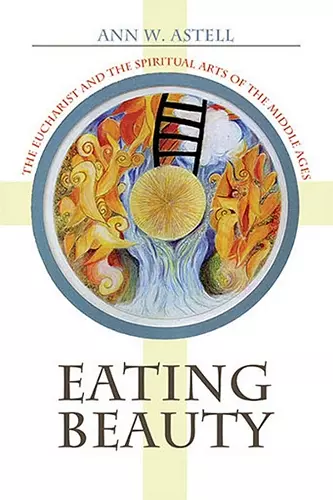Eating Beauty
The Eucharist and the Spiritual Arts of the Middle Ages
Format:Hardback
Publisher:Cornell University Press
Published:3rd Aug '06
Currently unavailable, and unfortunately no date known when it will be back
This hardback is available in another edition too:
- Paperback£31.00(9781501704345)

"The enigmatic link between the natural and artistic beauty that is to be contemplated but not eaten, on the one hand, and the eucharistic beauty that is both seen (with the eyes of faith) and eaten, on the other, intrigues me and inspires this book. One cannot ask theo-aesthetic questions about the Eucharist without engaging fundamental questions about the relationship between beauty, art (broadly defined), and eating."—from Eating Beauty
In a remarkable book that is at once learned, startlingly original, and highly personal, Ann W. Astell explores the ambiguity of the phrase "eating beauty." The phrase evokes the destruction of beauty, the devouring mouth of the grave, the mouth of hell. To eat beauty is to destroy it. Yet in the case of the Eucharist the person of faith who eats the Host is transformed into beauty itself, literally incorporated into Christ. In this sense, Astell explains, the Eucharist was "productive of an entire 'way' of life, a virtuous life-form, an artwork, with Christ himself as the principal artist." The Eucharist established for the people of the Middle Ages distinctive schools of sanctity—Cistercian, Franciscan, Dominican, and Ignatian—whose members were united by the eucharistic sacrament that they received.
Reading the lives of the saints not primarily as historical documents but as iconic expressions of original artworks fashioned by the eucharistic Christ, Astell puts the "faceless" Host in a dynamic relationship with these icons. With the advent of each new spirituality, the Christian idea of beauty expanded to include, first, the marred beauty of the saint and, finally, that of the church torn by division—an anti-aesthetic beauty embracing process, suffering, deformity, and disappearance, as well as the radiant lightness of the resurrected body. This astonishing work of intellectual and religious history is illustrated with telling artistic examples ranging from medieval manuscript illuminations to sculptures by Michelangelo and paintings by Salvador Dalí. Astell puts the lives of medieval saints in conversation with modern philosophers as disparate as Simone Weil and G. W. F. Hegel.
This book, as deeply felt as it is researched, is no less broad in the range of its intellectual sympathies, which embrace the histories of literature, spirituality, and art as well as aesthetics.
* Speculum *With this delicious book, four Christian 'ways' of eating the Beautiful or Sacred come to life. Ann Astell, whose in-depth writing on medieval figures has introduced many to the richness of the medieval exegetical and liturgical world, adds a 'theological-aesthetic' dimension to this work. Uniting spiritual and physical senses that modern interpreters anachronistically divide, Astell invites us to a feast of medieval sensory language that dwells in scriptural interpretation as it performs its spirituality in eucharistic participation.
* Journal of Religion *Educational and enlightening. Eleven full-color palettes accompany the tome, adding to the richness of the story. Eating Beauty was a journey I enjoyed.
-- John L. Francis * The Artistic TheologiISBN: 9780801444661
Dimensions: 235mm x 155mm x 28mm
Weight: 907g
312 pages